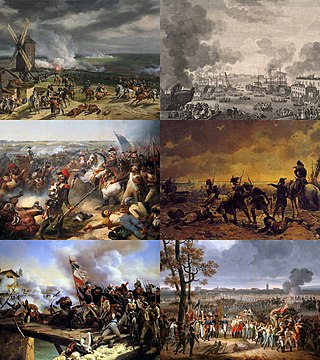History
| | This section is empty. You can help by adding to it. (July 2022) |
The 2nd New Brunswick Legislative Assembly represented New Brunswick between January 3, 1793, and 1795.
The assembly sat at the pleasure of the Governor of New Brunswick, Thomas Carleton. All sessions were held in Fredericton in a building rented for that purpose.
The speaker of the house was selected as Amos Botsford.
| | This section is empty. You can help by adding to it. (July 2022) |
| Electoral District | Name |
|---|---|
| Saint John | William Thomson |
| William Pagan | |
| George Younghusband | |
| Edward Sands | |
| Bradford Gilbert | |
| Elias Hardy | |
| York | Daniel Murray |
| Archibald McLean | |
| Stair Agnew | |
| Jacob Ellegood | |
| Westmorland | Amos Botsford |
| Thomas Chandler | |
| William Black | |
| Thomas Dixson | |
| Kings | John Coffin |
| David Fanning | |
| Queens | James Peters |
| John Yeamans | |
| Charlotte | Robert Pagan |
| Daniel McMaster | |
| Hugh Mackay | |
| Peter Clinch | |
| Northumberland | Ward Chipman |
| John Black | |
| Sunbury | John Agnew |
| James Glenie |

In the history of France, the First Republic, sometimes referred to in historiography as Revolutionary France, and officially the French Republic, was founded on 21 September 1792 during the French Revolution. The First Republic lasted until the declaration of the First Empire on 18 May 1804 under Napoléon Bonaparte, although the form of the government changed several times.

The War of the First Coalition was a set of wars that several European powers fought between 1792 and 1797 initially against the constitutional Kingdom of France and then the French Republic that succeeded it. They were only loosely allied and fought without much apparent coordination or agreement; each power had its eye on a different part of France it wanted to appropriate after a French defeat, which never occurred.

The Legislative Assembly of New Brunswick is the deliberative assembly of the New Brunswick Legislature, in the province of New Brunswick, Canada. The assembly's seat is located in Fredericton. It was established in Saint John de jure when the colony was created in 1784 but came into session only in 1786, following the first elections in late 1785. The legislative assembly was originally the lower house in a bicameral legislature. Its upper house counterpart, the Legislative Council of New Brunswick, was abolished in 1891. Its members are called "Members of the Legislative Assembly," commonly referred to as "MLAs".
James Sykes was an American physician and politician from Dover, in Kent County, Delaware. He was a member of the Federalist Party, who served in the Delaware General Assembly and as Governor of Delaware.

Henry Latimer was an American physician and politician from Newport, Delaware. He was elected to the Continental Congress from Delaware, and was a member of the Federalist Party, who served in the Delaware General Assembly, as U.S. Representative from Delaware, and U.S. Senator from Delaware.
A writ for the election of the 7th General Assembly of Nova Scotia was issued on Jan. 22, 1793, returnable by March 20, 1793. The assembly convened on March 20, 1793, held seven sessions, and was dissolved on October 11, 1799.
The Legislative Council of New Brunswick was the upper house of the government of the British colony and later Canadian province of New Brunswick between 1785 and 1891.
Jonathan Crane was a militia leader and political figure in Nova Scotia. He fought in the Battle off Cape Split in the American Revolution. He represented Kings County from 1784-1793 and 1799-1818, and Horton Township from 1818 to 1820 in the Nova Scotia House of Assembly.

The New Brunswick Legislature is the legislature of the province of New Brunswick, Canada. Today, the legislature is made of two elements: the lieutenant governor of New Brunswick, and the unicameral assembly called the Legislative Assembly of New Brunswick. The legislature has existed de jure since New Brunswick separated from Nova Scotia in 1784, but was not first convened until 1786.
Elijah Miles was a merchant, farmer, land owner and political figure in New Brunswick. He represented Sunbury County in the Legislative Assembly of New Brunswick from 1803 to 1809 and from 1816 to 1827.
James Glenie was a Scottish soldier, businessman and political figure associated with New Brunswick. He represented Sunbury County in the Legislative Assembly of New Brunswick from 1789 to 1809.
Thomas Millidge was a surveyor, judge, soldier and politician in Nova Scotia. He represented Digby Township from 1785 to 1793 and Annapolis County from 1793 to 1806 in the Nova Scotia House of Assembly.

The Department of Natural Resources and Energy Development is the department in the Government of New Brunswick, Canada, that oversees matters related to natural resources and energy development.

The Kingdom of France was a constitutional monarchy that governed France from 3 September 1791 until 21 September 1792, when this constitutional monarchy was succeeded by the French First Republic.

The 1792–93 United States Senate elections were held on various dates in various states, coinciding with President George Washington's unanimous re-election. As these U.S. Senate elections were prior to the ratification of the Seventeenth Amendment in 1913, senators were chosen by state legislatures. Senators were elected over a wide range of time throughout 1792 and 1793, and a seat may have been filled months late or remained vacant due to legislative deadlock. In these elections, terms were up for the ten senators in Class 2.
The 2nd New Brunswick general election may refer to:
Edward Sands was a politician in New Brunswick. He represented St. John in the Legislative Assembly of New Brunswick from 1793 to 1795 and from 1802 to 1803.
Hugh Mackay was a judge and political figure in New Brunswick. He represented Charlotte in the Legislative Assembly of New Brunswick from 1793 to 1795, from 1802 to 1809 and from 1817 to 1830.

The 1793 United States Senate special election in Pennsylvania was held on February 28, 1793. Albert Gallatin was elected by the Pennsylvania General Assembly to the United States Senate.